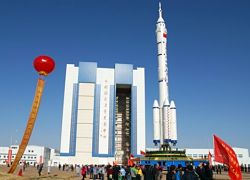Having weathered the global recession with surprisingly few troubles, China is looking for ways to sustainably grow its economy. This goal is reflected in China’s Twelfth Five-Year Plan – the intended economic course charted by the central government. Unlike the Five-Year plans of the Soviet Union, China blends central planning with a healthy acceptance of entrepreneurship. With this newest plan, China hopes to catapult itself into the developed world.
China’s pro-growth rhetoric and policies are making waves in Asian and commodity market; both are surging in anticipation of stimulus  measures implemented by the world’s second largest economy. Despite strong performance over the last few years, the decrease in local and commodity imports suggest China’s economy is not as strong as the numbers suggest. In light of this shadow and a visit to the important industrial city of Wuhan, China’s Premier Wen Jiaboa wants to step on the economic accelerator. This likely means more freedom for local governments “to undertake large-scale investment projects.” Although monetary policy reform will not offer much short-term relief, incremental fiscal injections have the best chance of stimulating the kind of growth China is looking for.
measures implemented by the world’s second largest economy. Despite strong performance over the last few years, the decrease in local and commodity imports suggest China’s economy is not as strong as the numbers suggest. In light of this shadow and a visit to the important industrial city of Wuhan, China’s Premier Wen Jiaboa wants to step on the economic accelerator. This likely means more freedom for local governments “to undertake large-scale investment projects.” Although monetary policy reform will not offer much short-term relief, incremental fiscal injections have the best chance of stimulating the kind of growth China is looking for.
The newest Five-Year Plan includes an unprecedented focus on climate change and environmental issues. Consequently, there is a strong focus on efficiency, carbon emission reduction, and sustainable energy. Building off earlier successes in promoting industrial efficiency, the new Plan intends to expand efficiency to existing buildings and other sectors. Non-fossil fuels, such as wind and nuclear power, are a focus to relieve China’s growing energy needs. Market-based reform, however, is a theme which runs through most of the China’s new economic plan.
One other component of the Plan is a focus on transportation. Two-thirds of the world’s current airport construction is in China. Chinese leaders, intent on growing beyond a manufacturing economy, are looking to the skies for hope. By focusing on the aerospace sector, China hopes to both meet domestic demands for internal air travel and increase the profile of Chinese companies abroad. Noting that the aerospace is the United States’ largest export industry, China hopes to climb to the next level of development partially on the prestigious and lucrative wings of aerospace. To be successful, however, the Chinese military must loosen its control over the skies – Chinese airspace is controlled by the military, which restricts civilian flights to circuitous, inefficient routes.
As China implements this next Five-Year Plan, there are bound to be impacts in the West. A strong China will help the global economy, given its inter-connectivity. If nothing else, a weak Chinese economy will combine with a shaky European and fragile American economy to further hinder global economic recovery. By directing growth into areas other than manufacturing, Chinese companies will compete directly with Western companies. In the aerospace sector, the West could potentially lose its long-held domination through complacency.
Dan St. John is the Editor in Chief of The View From Above.


